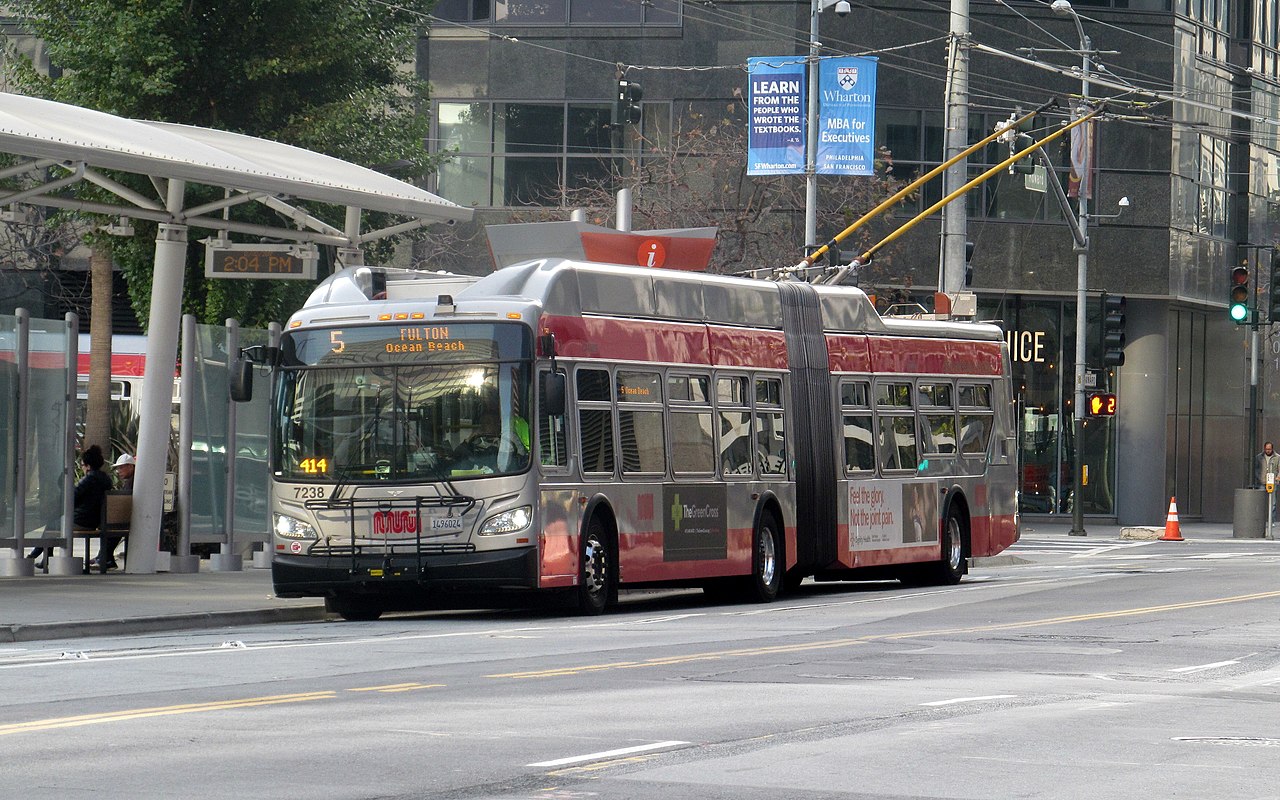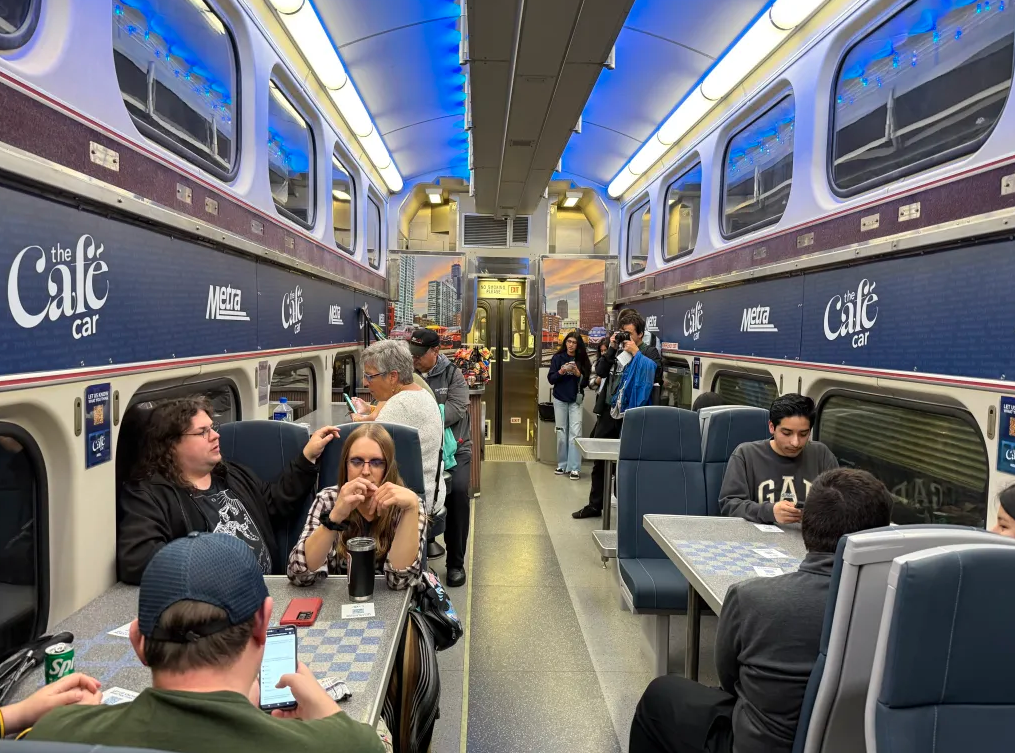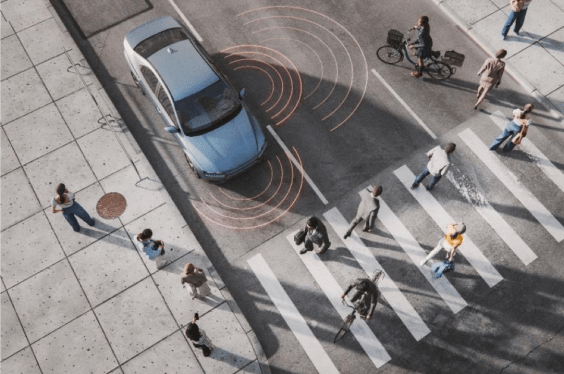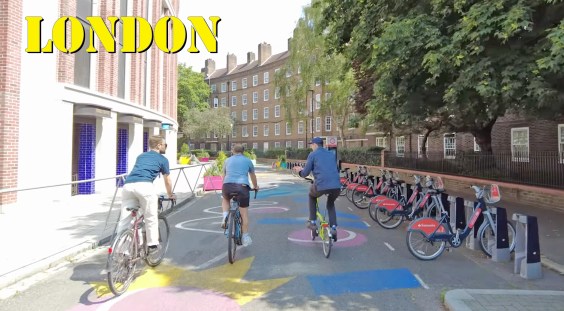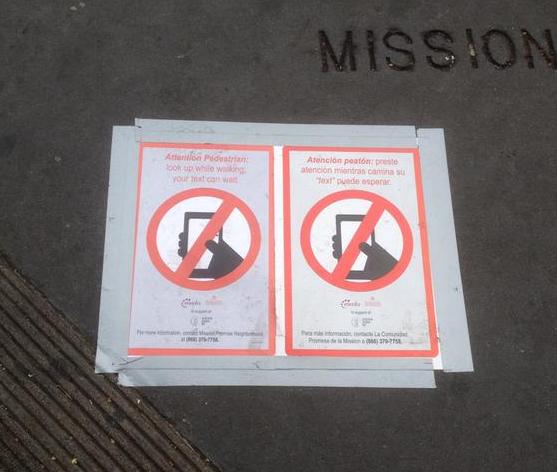
Flyers warning people not to walk across the street while looking at their phones, or against traffic signals, were recently posted on corners along Mission Street in the Mission District.
The flyers, which sport the official "Vision Zero SF" logo, feature messages like, "Attention pedestrian: Look up from your phone. Your text can wait." Another reads (in Spanish), "Careful. Stop. Crossing without sufficient time can kill you."
The flyers taped to the ground on Mission were produced by the Mission Economic Development Agency using a $9,000 "mini grant" from the Department of Public Health, which signed off on them. The flyers came in four versions, which MEDA staff said were also posted on mediums like bulletin boards. One version told drivers to respect crosswalks, and one told people of all modes to obey traffic signals.
The pedestrian-shaming message differs from the SFMTA's "Safe Streets SF" ad campaign, which has primarily targeted dangerous driving, which police data shows causes the plurality of pedestrian injuries citywide.
On Mission Street south of 20th Street, where the flyers were spotted, it's unusually common for pedestrians to be struck while crossing against the signal, according to a map that summarizes the data on the city's WalkFirst website. But as many crashes are caused by drivers who fail to yield while turning left, the map shows.
Teresa Morales-Phillips, MEDA's community engagement manager, said the campaign wasn't based on data. The messages were developed based on anecdotal evidence and feedback from SFMTA planners through public outreach by "promotoras/es" from the Mission Promise Neighborhood initiative.
"If you see a poster, it doesn't necessarily mean something happened there," said Morales-Phillips. "It just means we know people are looking down when they cross, and that's where the promotores do their work."
"When advocating for a safe transportation system, educating individuals on what they should or should not do is often the first, most tangible action for groups," said Walk SF Executive Director Nicole Ferrara. "In preventing injuries, we can make the greatest impact by tackling the root causes of injuries, and that's in fact the foundation of Vision Zero -- acknowledging that humans will make mistakes, and building a transportation system where those mistakes aren't lethal."
In a blog post announcing its DPH grant in February, MEDA described "some scary scenes," equating texting pedestrians with drivers gunning it to beat the light:
A stroll through the bustling Mission this morning revealed some scary scenes. A pedestrian texted while crossing at Valencia and 24th streets, oblivious to the cars turning in his direction. A few places north, a bicyclist brazenly weaved in and out of traffic. Over on Mission and 19th, a car sped up, barely make it through the red light, thereby endangering a mother pushing a baby stroller.
That's not to say that equal-opportunity shaming would be a sound messaging strategy. Equating drivers plowing through pedestrians in a crosswalk to people crossing against a light on bike or foot downplays the greater potential to cause damage when driving a motor vehicle. Other campaigns from District Attorney George Gascón, SFPD's Taraval Station, and Mayor Ed Lee's office have similarly missed the mark.
As for the stickers on Mission, they can be traced to a "targeted mini-grant program" coordinated by DPH "to support and expand community engagement along high injury corridors, including community-based organizations serving vulnerable populations," as described in the city's Vision Zero Two-Year Action Strategy [PDF].
The flyers on Mission won't be replaced without another grant, said Morales-Phillips.
Ferrara noted that MEDA "has been at the table when discussing transportation engineering solutions along Mission Street corridor."
MEDA "brings a valuable perspective to improving pedestrian safety," she said, "because their Promotores have been out along Mission, talking with community members to understand the dangerous behaviors on the street, all of which can be addressed through safer street design. "
